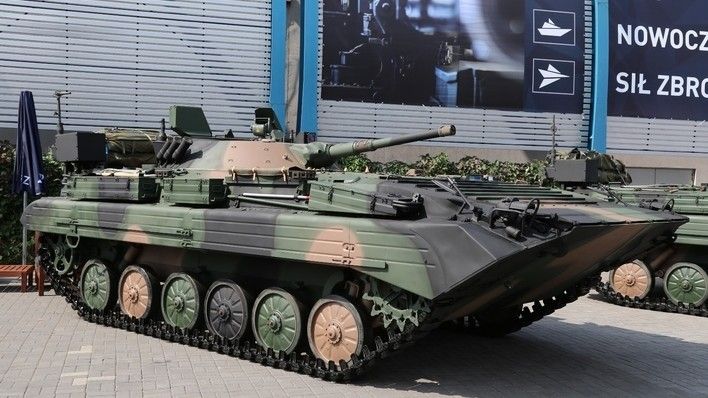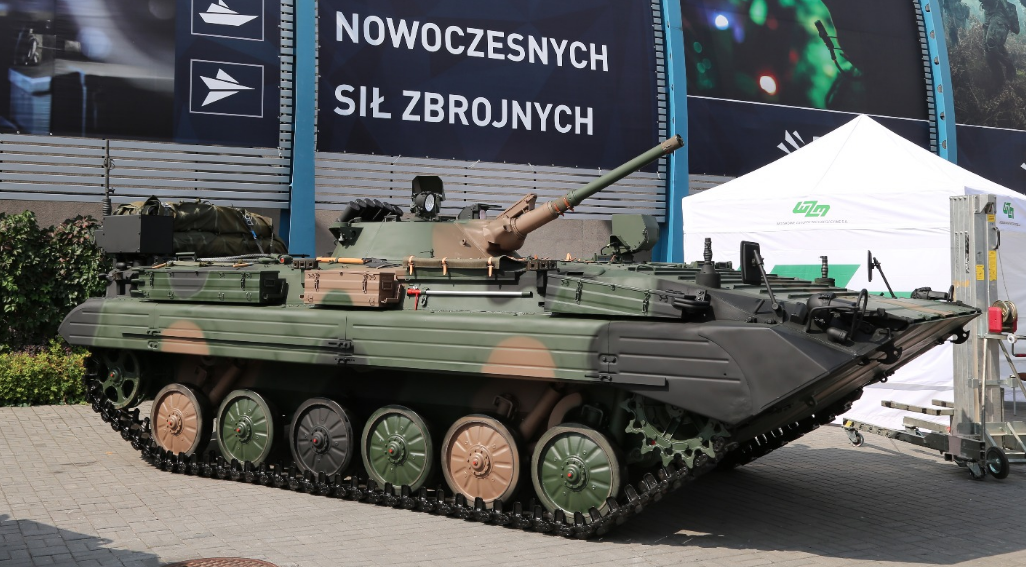Polish Military Receives the First Batch of the Upgraded BWR Vehicles. More to come in the future?

WZM facility in Poznan just finalized the first contract concerning the overhauls and modification of the BWR-1D and BWR-1S reconnaissance vehicles used by the Polish forces. Currently modification of another batch of those platforms is being considered.
The aforesaid overhauls and modifications have been carried out in line with the agreement concluded in May 2017 by and between a consortium led by WZM S.A. and also involving WZŁ Nr 2 S.A. and the 1st Regional Logistics Base in Wałcz. The provisions of the aforesaid agreements pertained to overhauls and modifications of BWR-1 reconnaissance vehicles, including three in BWR-1D and two in BWR-1S variants, within the framework of the ongoing general overhauls resulting from the maintenance schedule.
Read more: MSPO 2018: Two BWR Vehicle Upgrades
Responding to the questions asked by us, spokesperson for the Armed Forces Support Inspectorate, Lt. Col. Marek Chmiel, did confirm that all vehicles that are covered by this agreement have already undergone modifications and been handed off. Meanwhile, continuation of the process is conditioned by the decision of the administrator, following the assessment of the submissions made by the users of the modified equipment.
Lt. Col. Chmiel also noted that launching of the procedure aimed at conclusion of the agreement concerning the modification of more BWR vehicles would be possible after relevant funds are provided. “Modification of 18 reconnaissance vehicles would be possible, between 2020 and 2023, as the forecast suggests”, Chmiel added. “Conclusion of the Agreement will be possible in 2020 once the planning data is confirmed along with the quantity of financial means”, he noted.
Defence24.pl also found out, unofficially, that conclusions reached over the course of operational use of the first lots have already been analyzed. Configuration of further, modified BWR platforms would be very much similar to the one applied in case of the first batch.
Read more: Poland to spend USD 133 Billion on Modernization of the Armed Forces. New F-16 To Be Ordered
Both BWR-1 vehicle types, despite some design differences, have been subjected to an identical, relatively broad scope of work. As a result of the above, almost all of the mission equipment has been replaced. The enhancements include installation of a Harris/Radmor external communication suite, ICT system with a digital intercom delivered by the WB Group, JIM LR multifunctional 360-degrees observation system, integrated ZIG-T-2R optronic suite, SR HAWK(V)2E radar offering a capability to pinpoint the location of shell explosions and new navigation systems: TALIN 5000 INS and DAGR-enabled GPS.

Furthermore, the vehicles feature an automatic chemical contamination detection system (AP4C), MIMID miniaturized mine detector or portable DPO radiometer. Survivability and functionality of the vehicle has been enhanced by installing the SSP-1N Obra-3 self protection suite delivered by PCO, along with Berberys type 3 multispectral camouflage supplied by Lubawa. Further enhancements include a new 2 kW auxiliary power unit powered by the vehicle’s fuel tanks, along with a parking heater, enlarged tanks in the rear doors, passive observation/targeting systems, ergonomic seats for the vehicle crew and rubberized tracks. Installation of brand new UTD-20 diesel engines has been another change making it possible to continue the operational use of those vehicles. They have also been fitted with additional floater elements that made it possible to retain the amphibious capacity despite the weight increase.
Polish BWR-1S/D vehicles have not undergone any major upgrades since the acquisition in the late 1980s and early 1990s. The work carried out with regards to the first examples made it possible to gradually increase the capabilities within the scope of reconnaissance. This is a proof that modification (not modernization conducted in line with the regulations associated with introduction of a new type of armament) does not exclude introduction of relevant changes enhancing the combat potential offered by the given platform.
BWR vehicles that have undergone modifications can be viewed as the most modern platform of its type in the Polish military. Let us recall the fact that the reconnaissance companies of the Rosomak APC brigades still have not received the R1/R2 variant transporters. Apart from that, BRDM-2 vehicles that are obsolete are also being used by the reconnaissance elements. The military lacks vehicles that would be fitted with modern radar sensors at least. Should the modifications be implemented on the remaining BWR vehicles, this would greatly increase the capabilities of the reconnaissance units operating this platform.
Ultimately the vehicles in question would be replaced by the new Żuk reconnaissance platform that is to be based on the Borsuk IFV. One should remember, however - the Polish military still needs a high number of modern reconnaissance vehicles destined to be operated by the newly formed units - division level reconnaissance battalions, 18th Mechanized Division elements and recon companies of the existing brigades equipped with the BRDM-2 platform. Fully introducing Żuk into use would be a long-running process while tyhe modified BWR platform may play a very significant role in the reconnassaince elements of the Polish Armed Forces.